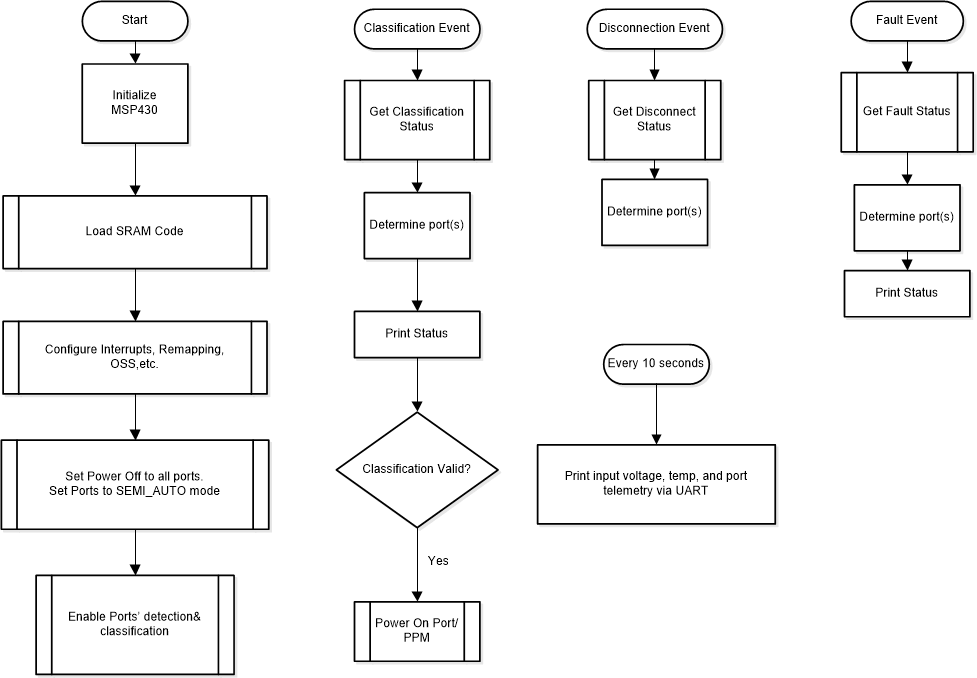SLVUC36 April 2021 TPS23882B
- Trademarks
- 1Description
- 2Quick Start
- 3General Use Features
- 4TPS23882B1 GUI Setup
- 5EVM Schematic, Layout Guidelines, PCB Assembly and Layer Plots
- 6Bill of Materials
4.4.3 Semi Auto Mode
Operation, the semi auto mode reference code is interrupt based. When MSP430 receives an interrupt from PSE's INT pin, the code checks interrupt the register and event registers to proceed with actions accordingly. The flowchart of semi auto mode code is shown in Figure 4-9.
 Figure 4-9 Semi Auto Mode System Software Structure
Figure 4-9 Semi Auto Mode System Software Structure